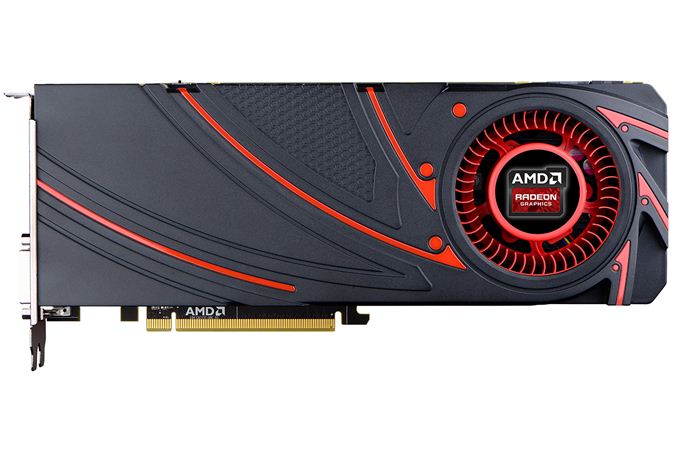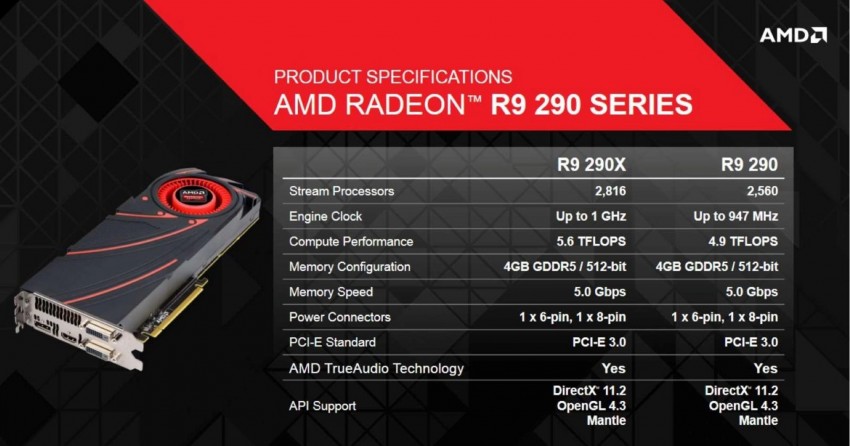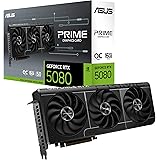Performance, Value, and Relevance
The AMD R9 290X, once a flagship graphics card, holds a unique position in the landscape of PC gaming. This essay explores the card’s continued viability for specific use cases, its drawbacks in comparison to modern GPUs, and factors to consider when evaluating its potential purchase.
Historical Context and Initial Impact
Released in 2013, the R9 290X aimed to challenge Nvidia’s high end offerings. Based on the “Hawaii” architecture, it boasted impressive raw compute power and a large memory bandwidth. This made it a popular choice for gamers seeking high frame rates at 1080p and even 1440p resolutions. Its aggressive pricing further fuelled its popularity, disrupting the market and forcing Nvidia to respond with price cuts. The R9 290X quickly became synonymous with high performance at a relatively affordable price point. Its impact extended beyond gaming. Its strong compute capabilities made it attractive for cryptocurrency mining, a trend that would later significantly impact the GPU market.
Value Proposition and Budget Considerations
The primary reason to consider an R9 290X in the current market is its potential affordability. Used cards can be found at very low prices, making them attractive to budget conscious gamers. If you are on a tight budget and only need a serviceable GPU for older games or less demanding tasks, a cheap R9 290X in good condition could be a viable option. However, it’s crucial to weigh the initial cost against other factors. The R9 290X consumes a significant amount of power, leading to higher electricity bills and potentially requiring a more powerful power supply unit (PSU). Its cooling solutions are also often loud and less effective than those found on modern cards. Upgrading the PSU or adding aftermarket cooling can quickly negate the initial cost savings. It is essential to factor in these hidden costs when evaluating the overall value proposition.
Power Consumption, Heat, and Noise
One of the R9 290X’s major drawbacks is its high-power consumption. Under load, it can draw a considerable amount of power, placing a strain on your PSU and generating significant heat. This heat necessitates robust cooling solutions, which often translate to increased fan noise. Compared to modern GPUs, the R9 290X is significantly less power efficient. Newer cards offer similar or better performance at a fraction of the power consumption, resulting in lower electricity bills and reduced noise levels. This is a crucial consideration for gamers who value a quiet and energy efficient system.
Feature Set and Technological Limitations
The R9 290X lacks many of the modern features found in newer GPUs. It does not support ray tracing, a technology that simulates realistic lighting and reflections, or DLSS (Deep Learning Super Sampling), which uses AI to upscale lower resolution images to improve performance without sacrificing visual quality. These features significantly enhance the gaming experience in modern titles, and their absence limits the R9 290X’s appeal for gamers seeking the latest visual advancements. Furthermore, driver support for older cards may be less frequent, potentially leading to compatibility issues with newer games and operating systems.
Alternatives and Comparisons
In many cases, newer mid-range GPUs offer superior performance and features compared to the R9 290X at a similar or slightly higher cost. Cards like the Nvidia GeForce GTX 1660 Super or AMD Radeon RX 6600 provide significantly better performance per watt, support modern features, and come with warranties. These cards are also more readily available and less likely to have been subjected to heavy use in mining operations. While the R9 290X may seem like a bargain on the used market, it’s crucial to consider the long-term benefits of investing in a newer, more efficient, and feature rich GPU.
Mining and Compute Workloads
Despite its age, the R9 290X can still be used for certain compute workloads, including cryptocurrency mining. However, its efficiency is significantly lower compared to modern GPUs designed specifically for mining. The high-power consumption and heat generation make it less profitable than newer cards, and the increased risk of hardware failure due to prolonged use further diminishes its appeal. For most compute tasks, newer GPUs offer a much better performance per watt ratio, making them a more sensible investment.
As cryptocurrencies gained popularity, the card’s specifications aligned well with mining algorithms. Its performance metrics indicated impressive hash rates, with noteworthy abilities in various mining algorithms such as Lyra2REv2, DaggerHashimoto, and Equihash. For instance, it registered a mining hash rate of 16. 4 MH/s for Lyra2REv2 and approximately 25. 75 MH/s for the DaggerHashimoto algorithm, which were compelling figures for miners seeking efficient hardware.
The ability of the R9 290X to deliver such performance caused a paradigm shift in the mining community. Miners sought out the card for its robustness and ability to produce a favourable balance between power consumption and mining efficiency. It drew attention from those interested in the merits of cryptocurrencies, showcasing how a single piece of hardware could straddle both gaming and mining interests over its lifespan.
Power Supply Requirements
Before purchasing an R9 290X, it’s essential to ensure that your power supply unit (PSU) can handle its high-power draw. A weak or borderline PSU can lead to system instability, crashes, and even hardware damage. It’s recommended to have a PSU with sufficient wattage and amperage to comfortably accommodate the R9 290X’s power requirements, along with the rest of your system components. If you need to upgrade your PSU, the total cost of ownership can quickly exceed the price of a newer, more efficient GPU.
Warranty and Reliability
Most R9 290X cards are sold on the used market, meaning that warranty coverage is either minimal or non-existent. This increases the risk of purchasing a faulty card or one that fails prematurely. Unlike new GPUs, used cards have an unknown history, and may have been subjected to heavy use in mining operations or overclocking, which can shorten their lifespan. The lack of warranty and the increased risk of failure are significant drawbacks to consider when evaluating the R9 290X.

Scenarios Where the R9 290X Might Be Suitable
Despite its limitations, the R9 290X can still be a viable option in specific scenarios. If you are on an extremely tight budget and can find a used card in excellent working condition at a very low price, it can provide usable performance for older games or less demanding tasks. If you already have a power supply that can handle its high-power draw and a case with adequate airflow to dissipate the heat, the R9 290X can be a cost-effective solution for basic gaming needs. However, it’s crucial to acknowledge its limitations and accept the compromises in terms of noise, heat, and features.
Scenarios Where the R9 290X Should Be Avoided
In most cases, it’s advisable to avoid purchasing an R9 290X in the current market. If you want future proofing and the ability to play newer games at high settings, a newer GPU is a much better investment. If you value power efficiency, low noise levels, and modern features like ray tracing and DLSS, the R9 290X is not a suitable choice. If you need to upgrade your PSU or case cooling to accommodate the R9 290X, the total cost will likely exceed the price of a newer, more capable GPU.
The AMD R9 290X, while a capable card in its prime, is showing its age in the modern gaming landscape. While it can still provide playable performance in older games and esports titles, its high-power consumption, heat generation, and lack of modern features make it a less attractive option compared to newer GPUs. The primary reason to consider an R9 290X is its potential affordability on the used market. However, it’s crucial to weigh the initial cost savings against the long-term drawbacks and potential hidden expenses. In most cases, investing in a newer, more efficient, and feature rich GPU is a more sensible choice for gamers seeking a better overall experience.
The AMD R9 290X served as a cornerstone in the evolution of graphics technology, influencing both gaming enthusiasts and the burgeoning cryptocurrency mining industry. Its specifications and capabilities allowed it to thrive in a competitive market and established a benchmark for future innovations. As technological advancements continue, the legacy of the R9 290X will remain ingrained in the foundations of graphics processing, inspiring both developers and users alike. Future generations will build upon the successes of the R9 290X, shaping the future of video gaming and mining for years to come.
Summary of the AMD R9 290X Specifications :
- Clock Speed : 1000 MHz
- Memory Bandwidth : 352 GB/s
- Memory Type : GDDR5
- Memory Size : 4GB
- Streem Processing Units : 2816 (44 Compute Units)

Summary if the AMD R9 290x Mining Hashrate :
- Lyra2REv2 [ (XVG) & (VTC) & (MONA) ] Mining Hashrate : 16.4 MH/s
- DaggerHashimoto [ EtHash : (ETH) & (ETC) ] Mining Hashrate : 25.75 MH/s
- Decred (DCR) Mining Hashrate : 1.07 GH/s
- Cryptonight [ (XMR) & (XDN) ] Mining Hashrate : 0.76 kH/s
- Lbry ( LBC ) Mining Hashrate : 0.07 GH/s
- Equihash [ (ZEC – ZEN – ZCL) & (BTG) & (KMD) & (HUSH) ] Mining Hashrate : 350 Sol/s
- Pascal [ (PASC) & (PASL) ] Mining Hashrate : 0.75 GH/s
- X11GOST [ Sibcoin (SIB) ] Mining Hashrate : 3.8 GH/s
Power Consumption : 350 Watt/Per Hour.





Hello!
Anyone know anything of the ravencoin hashrate of this card? Because I don’t found any updated information. Thanks for answer
11.5 mhz